Table of Contents
Plot
Welcome to The Mandalorian S1 E4 Review. The episode begins with the Mandalorian and Baby Yoda continuing their journey through the galaxy, seeking a safe haven from the bounty hunters pursuing them. They arrive on the planet Sorgan, a remote and tranquil world far removed from the conflicts of the galaxy.
As the Mandalorian explores the local village, he meets a woman named Omera and her daughter Winta. He learns that the village is struggling to survive due to the constant raids from a group of Klatooinian raiders. The villagers are unable to defend themselves and are seeking help.

While the Mandalorian contemplates leaving to avoid bringing danger to the village, he changes his mind after seeing the children and recognizing their vulnerability. He decides to help the villagers fend off the raiders in exchange for lodging and refuge for himself and Baby Yoda.
The Mandalorian seeks out Cara Dune, a former Rebel shock trooper, to assist him in training the villagers. After a brief scuffle to test her combat skills, she agrees to help and arrives at the village with him.
The Mandalorian and Cara Dune train the villagers in combat techniques and set up traps to defend against the raiders. During this time, Baby Yoda becomes a source of curiosity and adoration for the village children.
As the raiders approach, the villagers and the two mercenaries prepare for the battle. The raiders attack the village, and a fierce firefight ensues. The villagers successfully defend their homes using the tactics they learned.
Following the battle, the Mandalorian and Cara Dune share a moment of camaraderie, acknowledging the relief they provided to the villagers. The Mandalorian contemplates staying in the village with Baby Yoda, but Cara Dune reminds him that danger will always find them.
In the end, the Mandalorian realizes that it’s best to keep moving and not put the villagers in harm’s way. He bids farewell to Omera and Baby Yoda and leaves Sorgan with Cara Dune.
The episode concludes with the Mandalorian and Baby Yoda departing from Sorgan, continuing their journey through the galaxy as they remain pursued by those seeking the child’s mysterious abilities.
The episode explores themes of protection, sacrifice, and the impact of one’s actions on others. It delves into the Mandalorian’s internal conflict as he balances his desire for a peaceful life with the realization that danger follows him wherever he goes. The relationships he forms with Omera, Winta, and the villagers highlight the connections that can be made amidst chaos and adversity.
Additionally, the episode showcases the Mandalorian’s skills as a protector and warrior, as well as the growth of the villagers as they learn to defend themselves. The theme of unity and the ability to rise against challenges is prevalent throughout the episode.
Character development
Mandalorian (Din Djarin):
The Mandalorian’s character development is highlighted by his interactions with the villagers and his internal struggle between seeking a peaceful life and fulfilling his duty to protect those in need:
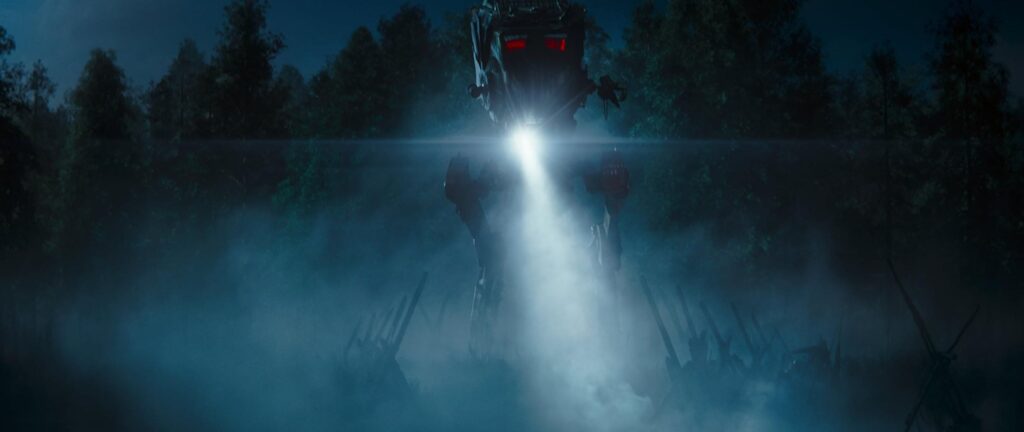
1. Desire for Peace: The Mandalorian’s desire for a quiet life is evident as he initially considers staying on Sorgan to provide a safe haven for Baby Yoda and himself. He’s drawn to the simplicity of village life and the sense of community.
2. Emotional Connection: Through his interactions with Omera and Winta, the Mandalorian develops a genuine emotional connection. He connects with Omera’s longing for stability and recognizes her concern for Winta’s future.
3. Internal Conflict: The Mandalorian’s internal conflict is palpable as he grapples with the decision to stay and protect the villagers or continue his journey to keep Baby Yoda safe. His sense of duty as a protector collides with his desire for a life without constant danger.
4. Self-Discovery: Through his experiences on Sorgan, the Mandalorian gains insight into his own identity beyond being a lone bounty hunter. He finds a sense of belonging and purpose as he trains the villagers and defends them from raiders.
Baby Yoda (Grogu):
While Baby Yoda’s character development is more subtle, his interactions with the villagers reveal more about his nature and the connections he forms:
1. Innocence and Curiosity: Baby Yoda’s innocence and curiosity shine as he interacts with the village children, playing with them and eliciting smiles. His presence brings an air of wonder to the village, emphasizing his childlike nature.
2. Ability to Bond: Baby Yoda’s ability to bond with others is evident as he forms a connection with the villagers, particularly the children. His presence fosters a sense of unity and compassion, bridging the gap between species.
3. Unifying Force: Baby Yoda becomes a unifying figure, captivating the villagers and mercenaries alike. His presence encourages cooperation and helps strengthen the bonds formed between characters.
In summary, episode 4 of “The Mandalorian” focuses on the character development of the Mandalorian and Baby Yoda as they navigate their interactions with the villagers of Sorgan. The Mandalorian’s internal conflict and self-discovery, along with Baby Yoda’s innocence and ability to connect with others, contribute to the episode’s emotional depth and highlight the complexity of their journey.
Visual effects and cinematography
Visual Effects:
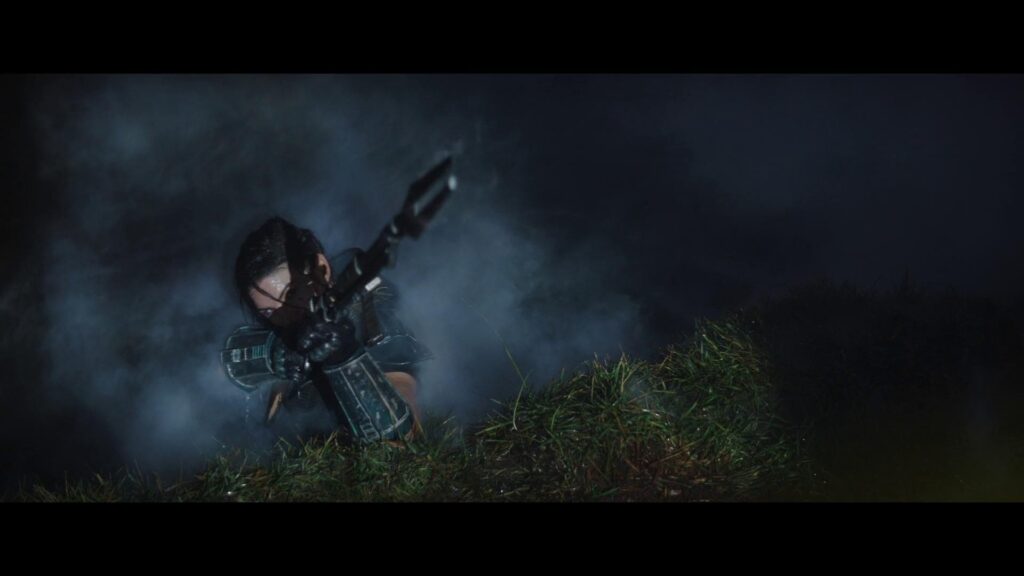
1. Landscape and Environment: The episode features lush and picturesque landscapes of the planet Sorgan. The visual effects team creates a believable and vibrant alien world, complete with forests, lakes, and village settlements.
2. Creatures and Wildlife: The episode introduces various creatures native to Sorgan, such as the Blurrgs used by the villagers for transportation. These creatures are seamlessly integrated into the environment through visual effects, enhancing the authenticity of the setting.
3. Battle Sequences: During the battle against the Klatooinian raiders, visual effects are used to enhance the action sequences. Blaster shots, explosions, and dynamic combat movements are all meticulously crafted to provide thrilling and realistic visual experiences.
Cinematography:
1. Aesthetic Choices: The episode maintains the visual aesthetic established in the series, combining the rugged look of a Western with the futuristic elements of the Star Wars universe. The cinematography reflects this blend through shot composition, lighting, and color grading.
2. Character Focus: The cinematography emphasizes character interactions and emotions. Close-ups and framing choices capture the nuances of facial expressions, highlighting the emotional depth of the characters.
3. Scenic Shots: The episode takes advantage of the natural beauty of the filming locations, capturing wide shots of the Sorgan village, the surrounding landscapes, and the battles. These scenic shots contribute to the immersion and world-building.
4. Action Choreography: The choreography of action sequences is complemented by dynamic camera movements and angles. These techniques intensify the impact of the action and keep viewers engaged in the battles.
5. Tension and Suspense: Cinematic techniques like tracking shots and slow camera movements build tension during moments of suspense. This adds to the atmosphere and heightens the anticipation of key events.
6. Visual Storytelling: The cinematography effectively communicates information to the audience, such as the Mandalorian’s internal conflict and his growing attachment to the villagers. Visual storytelling eliminates the need for excessive dialogue.
In summary, episode 4 of “The Mandalorian” showcases the continued excellence of its visual effects and cinematography. The combination of seamlessly integrated visual effects, authentic world-building, and deliberate cinematographic choices contributes to the series’ immersive experience and storytelling prowess
World-building of the series
New Planet: Sorgan
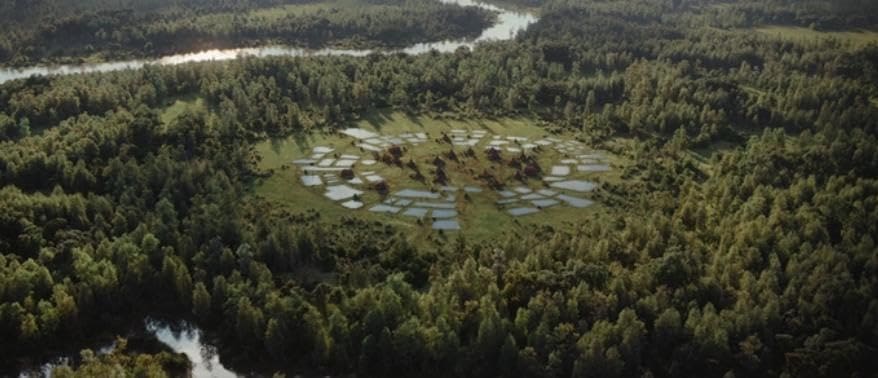
1. Landscape and Environment: Sorgan is depicted as a remote and tranquil planet with lush forests, open plains, and lakes. The episode showcases its diverse terrain, emphasizing its natural beauty and the variety of environments within a single location.
2. Village Life: The village on Sorgan serves as a microcosm of local life. The simple agrarian community offers a glimpse into the challenges faced by its inhabitants and their reliance on farming for survival.
3. Native Wildlife: The planet’s native wildlife, including Blurrgs used as pack animals, adds authenticity to the ecosystem. These creatures are a part of the villagers’ daily lives and contribute to their self-sufficiency.
Cultural Aspects:
1. Villager’s Struggle: The villagers’ plight showcases the challenges faced by those living on the outskirts of galactic conflicts. Their vulnerability to the Klatooinian raiders highlights the widespread impact of galactic instability.
2. War-Torn Past: Cara Dune’s presence hints at the wider galaxy’s history. As a former Rebel shock trooper, her character alludes to the ongoing consequences of the Galactic Civil War and its impact on individuals.
Interaction and Unity:
1. Interactions with Outsiders: The Mandalorian and Cara Dune’s interactions with the villagers provide insight into their perspective on outsiders. While some are welcoming and seek protection, others are cautious due to their wariness of violence.
Lore References:
1. Cara Dune’s Background: The episode introduces Cara Dune as a former Rebel shock trooper. Her character references events from the broader Star Wars lore, hinting at the post-Empire landscape and the effects of past conflicts.
2. Blurrgs: The use of Blurrgs by the villagers as pack animals is a nod to the creature’s appearance in other Star Wars media, such as the animated series “Star Wars: The Clone Wars.”
In summary, episode 4 of “The Mandalorian” contributes to the world-building of the series by introducing the planet Sorgan, its inhabitants, and their challenges. The portrayal of village life, cultural aspects, and interactions with outsiders enriches the Star Wars universe by showcasing the diverse and interconnected nature of its inhabitants and the impact of galactic events on local communities
The action sequences and direction
Action Sequences:
1. Training Montage: The episode features a training montage where the Mandalorian and Cara Dune train the villagers in combat techniques. This sequence not only showcases the Mandalorian’s and Cara’s expertise but also highlights the villagers’ determination to defend themselves.
2. Raiders’ Attack: The climactic battle against the Klatooinian raiders is a major action set piece. The sequence is well-choreographed, featuring blaster shootouts, hand-to-hand combat, and clever traps set up by the villagers. The action intensifies as the villagers and the Mandalorian’s team fend off the raiders’ relentless assault.
3. Strategic Planning: The action is not just about firepower but also about strategy. The Mandalorian and Cara’s leadership skills are showcased as they organize the villagers and coordinate their efforts to overcome the raiders. The use of tactics and teamwork adds depth to the action.
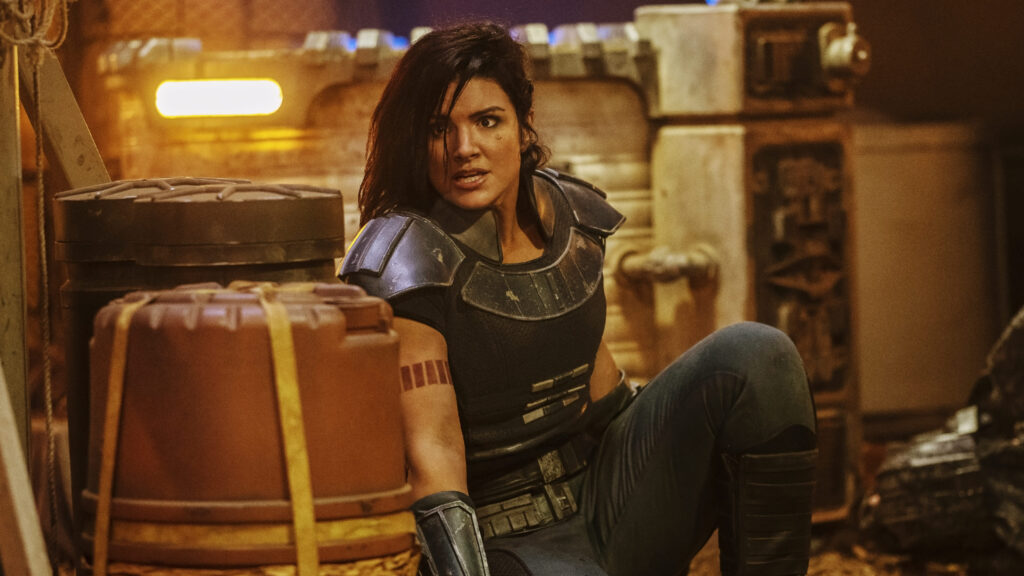
Direction:
1. Character-Centric Focus: Director Bryce Dallas Howard maintains a focus on character interactions and development. The interpersonal dynamics between the Mandalorian, Cara Dune, and the villagers are explored through their actions, expressions, and body language.
2. Emotional Beats: The direction emphasizes emotional beats during moments of decision-making and reflection. Close-ups and facial expressions convey the Mandalorian’s inner struggle and attachment to the villagers.
3. Tension and Release: The direction effectively builds tension during the training montage and the preparation for the raid. The pacing allows the audience to immerse themselves in the characters’ experiences and anticipate the action.
4. Humanizing Elements: Director Bryce Dallas Howard captures moments of humanity amidst the action. Scenes such as Baby Yoda interacting with the children or the villagers’ determination to defend their homes add emotional depth to the episode.
5. Spatial Awareness: The director maintains spatial awareness during action sequences, ensuring that the audience can follow the movements and geography of the battles. This clarity enhances the viewing experience.
6. Visual Storytelling: The direction effectively employs visual storytelling, using actions and visuals to convey information and emotions. This approach allows for meaningful storytelling without relying solely on dialogue.
In summary, episode 4 of “The Mandalorian” balances action sequences with character-driven moments, showcasing the Mandalorian’s and Cara Dune’s combat skills, the villagers’ growth as fighters, and the emotional resonance of their struggles. The direction by Bryce Dallas Howard contributes to the episode’s tension, emotion, and immersive storytelling, enhancing the overall impact of the action sequences and character interactions.
Music and sound design
Music:
1. Consistency of Themes: Composer Ludwig Göransson maintains consistency with the main themes of “The Mandalorian” series. The iconic Mandalorian theme, characterized by its Western-inspired instrumentation and rhythmic patterns, remains a prominent element in the episode’s score.
2. Emotional Undercurrent: The music complements the emotional journey of the characters. During introspective moments and character interactions, the score underscores the emotional weight of their decisions and challenges, adding depth to their experiences.
3. Action and Tension: The music enhances the tension during action sequences. Fast-paced rhythms, intense percussion, and rising melodies heighten the excitement and energy of the battle against the Klatooinian raiders.
4. Variety of Instruments: Göransson continues to incorporate a diverse range of instruments and textures into the score. From strings to electronic elements and ethnic instruments, the music maintains a unique and immersive sonic palette.
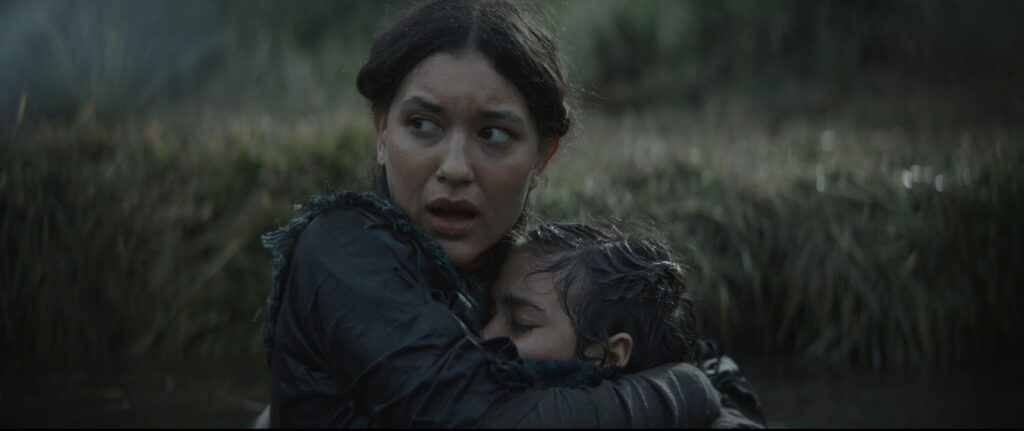
Sound Design:
1. Environmental Ambiance: The episode’s sound design immerses the audience in the world of Sorgan. Ambient sounds of chirping creatures, rustling leaves, and flowing water contribute to the realism and immersion of the planet’s environment.
2. Weaponry and Combat: Blaster shots, explosions, and combat sounds are meticulously crafted to enhance the intensity and realism of the action sequences. The sound design helps ground the audience in the chaos of battle.
3. Creature Vocalizations: The Blurrgs and other creatures native to Sorgan have distinct vocalizations that add authenticity to the ecosystem. These sounds contribute to the sense of place and reinforce the variety of life on the planet.
4. Character Interactions: The sound design supports character interactions by capturing the subtleties of their speech and vocal expressions. This attention to detail ensures that even quiet moments remain engaging and meaningful.
5. Baby Yoda’s Sounds: The endearing vocalizations of Baby Yoda continue to be a highlight. His coos, giggles, and other vocal cues add charm and endearment to his interactions with the characters.
6. Atmospheric Changes: The sound design reflects the transitions between quiet, peaceful moments and intense action sequences. These shifts in ambiance help guide the audience’s emotional response to the unfolding events.
In summary, episode 4 of “The Mandalorian” utilizes a carefully crafted combination of music and sound design to immerse the audience in the world of Sorgan, enhance the emotional resonance of character interactions, and intensify the impact of action sequences. The episode’s music maintains thematic consistency while adapting to various emotional and narrative contexts, while the sound design creates an authentic and engaging auditory experience that adds depth and realism to the storytelling.
Pacing and structure
Pacing:
1. Introduction and Set-Up: The episode begins with a slower pace as the Mandalorian and Baby Yoda arrive on the planet Sorgan. This section introduces the audience to the tranquil village and its inhabitants, allowing time for world-building and character interactions.
2. Character Interactions: As the Mandalorian interacts with Omera, Winta, and other villagers, the pacing remains deliberate, giving viewers the chance to understand their struggles and motivations. This section emphasizes the Mandalorian’s desire for a peaceful life and his growing connection to the villagers.
3. Training Montage: The episode’s pacing picks up as the Mandalorian and Cara Dune train the villagers to defend themselves. This montage adds a sense of progression and preparation, setting the stage for the impending conflict.
4. Climactic Battle: The pacing accelerates during the climactic battle against the Klatooinian raiders. The action sequences are dynamic and intense, filled with blaster shootouts, combat maneuvers, and strategic planning. The pacing here is fast-paced, mirroring the urgency of the situation.
5. Resolution and Farewell: After the battle, the pacing slows down again, allowing for moments of reflection and resolution. The Mandalorian’s decision to leave the village and the emotional farewells provide closure to the narrative arc of the episode.
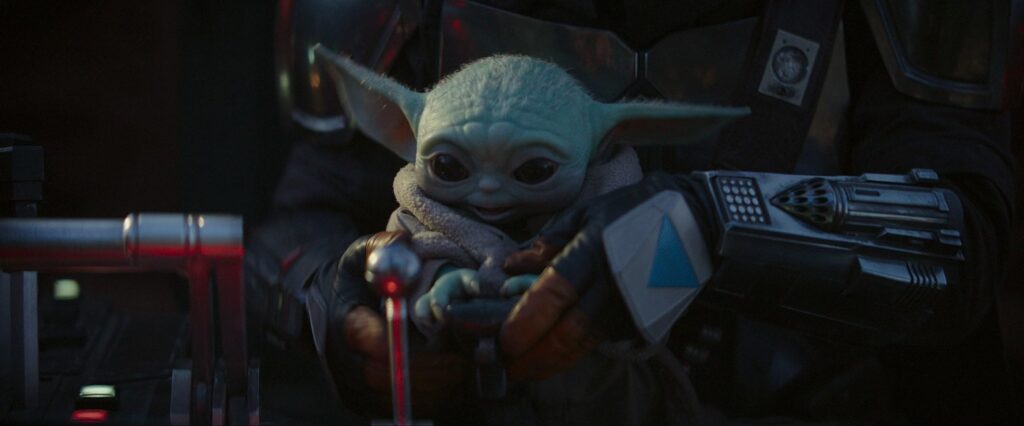
Episode Structure:
1. Introduction: The episode opens with the Mandalorian and Baby Yoda’s arrival on Sorgan. This section introduces the planet, the village, and some of its inhabitants, setting the stage for the conflicts and challenges to come.
2. Character Arcs: The episode focuses on the Mandalorian’s internal conflict and character development. His interactions with Omera, Winta, and Cara Dune provide insight into his motivations and struggles.
3. Training and Preparation: The training montage showcases the Mandalorian’s leadership skills and the growth of the villagers as they prepare to defend themselves. This section emphasizes teamwork and unity.
4. Conflict and Action: The climactic battle against the raiders forms the central action set piece. Tension builds as the villagers and the Mandalorian’s team put their training into practice, leading to a dynamic and engaging sequence.
5. Resolution and Reflection: The episode concludes with resolution as the Mandalorian decides to leave the village, realizing that his journey must continue. Emotional farewells emphasize the relationships formed during his stay.
6. Episodic Continuity: While the episode tells a self-contained story centered around Sorgan, it also maintains continuity with the overarching narrative of the series by touching on the Mandalorian’s ongoing journey and the challenges he faces.
In summary, episode 4 of “The Mandalorian” features a well-paced narrative structure that balances character development, action, and emotional resonance. The deliberate pacing allows for immersive world-building, engagement with characters’ emotional arcs, and thrilling action sequences, all contributing to a cohesive and engaging episode.
Originality and innovation:
Originality:
1. Blending Genres: “The Mandalorian” maintains its unique blend of genres, combining the elements of space opera, Western, and science fiction. Episode 4 exemplifies this by presenting a Western-inspired village defense narrative within the “Star Wars” universe.
2. Character-Driven Narrative: The episode focuses on character development, introspection, and relationships. It deviates from the typical space battles and galactic politics, honing in on the Mandalorian’s internal conflict and his interactions with the villagers.
3. Localized Conflict: The episode’s central conflict revolves around a localized threat—Klatooinian raiders—rather than grand-scale battles. This shift in focus showcases the impact of galactic conflicts on local communities, adding depth to the “Star Wars” universe.
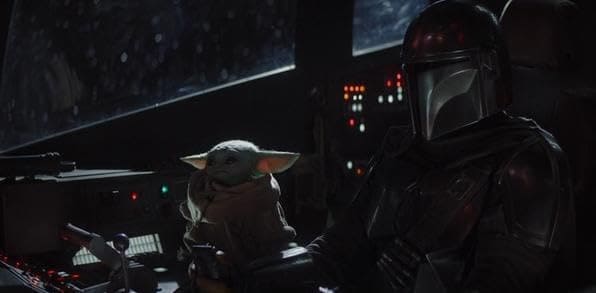
Innovation:
1. Subverting Expectations: The episode innovates by subverting the audience’s expectations. While action and adventure are central to the series, this episode takes a quieter approach, emphasizing character growth and intimate moments.
2. World-Building through Diversity: The introduction of the planet Sorgan and its inhabitants expands the “Star Wars” universe by showcasing diverse cultures and challenges faced by different communities. This contributes to the richness of the galaxy’s tapestry.
3. Humanizing the Mandalorian: The Mandalorian’s interaction with the villagers humanizes his character, offering glimpses of vulnerability and empathy. This depth adds complexity to his role as a traditional bounty hunter and builds upon established lore.
4. Exploring Themes of Identity: The Mandalorian’s struggle between seeking a peaceful life and fulfilling his duty explores themes of identity and purpose, giving the episode a reflective and introspective dimension.
5. Strong Female Characters: The episode features strong female characters like Cara Dune and Omera who defy traditional gender roles, adding diversity and representation to the narrative.
In summary, episode 4 of “The Mandalorian” showcases originality through its genre-blending and character-driven approach. Its innovation lies in subverting expectations, exploring local conflicts, humanizing characters, and expanding the universe’s diversity and themes. This episode continues to challenge conventions within the “Star Wars” universe while maintaining the series’ distinct style and narrative depth.
Fan appeal and Easter eggs
Fan Appeal:
1. Character Relationships: The episode delves into character relationships, particularly the interactions between the Mandalorian, Baby Yoda, and the villagers. Fans are drawn to the emotional depth and connections formed between the characters.
2. Action and Combat: The episode features thrilling action sequences and combat, satisfying fans who enjoy the intense and dynamic moments synonymous with the “Star Wars” franchise.
3. World-Building: The introduction of the planet Sorgan and its inhabitants adds to the expansive “Star Wars” universe, giving fans the opportunity to explore new cultures and environments within the galaxy.

Easter Eggs and References:
1. Blurrgs: The use of Blurrgs as pack animals by the villagers is a callback to their appearance in the animated series “Star Wars: The Clone Wars.” This reference adds continuity and a sense of familiarity for fans of the broader lore.
2. Cara Dune’s Background: Cara Dune’s status as a former Rebel shock trooper alludes to events from the Galactic Civil War, expanding on the “Star Wars” timeline and providing a connection to other media.
3. Villagers’ Attire: The clothing worn by the villagers bears a resemblance to the attire of the Ewoks from “Return of the Jedi.” This nod to the iconic species is likely to resonate with long-time “Star Wars” enthusiasts.
4. Peaceful Moments: The episode includes quieter moments reminiscent of the “slice of life” scenes in “A New Hope,” where Luke Skywalker interacts with the residents of Tatooine. This homage creates a sense of nostalgia for classic “Star Wars” aesthetics.
5. The Mandalorian’s Armor: The Mandalorian’s iconic Beskar armor remains a focal point, serving as a symbol of his identity and Mandalorian heritage. This consistency maintains fan interest and recognition.
6. Mysterious Species: Baby Yoda’s interactions with the village children and the inherent fascination he draws mirror the intrigue surrounding Yoda’s species throughout the “Star Wars” saga.
7. Western Aesthetic: The episode continues to embrace the Western genre, with shots and scenes reminiscent of classic Western films. This fusion of genres adds a unique flavor to the series that fans appreciate.
In summary, episode 4 of “The Mandalorian” appeals to fans by delivering engaging character dynamics, thrilling action, and world-building within the “Star Wars” universe. Easter eggs and references to established lore further enrich the viewing experience for dedicated fans, offering moments of nostalgia and recognition while also expanding on the lore and connections within the galaxy far, far away.
Enjoyment and potential recommendation:
Overall Enjoyment:
1. Character Development: The episode delves into the Mandalorian’s character development, highlighting his internal conflicts, desires for a peaceful life, and emotional connections. This introspective exploration adds depth to his persona and makes him more relatable to the audience.
2. Humanizing Elements: The interaction between Baby Yoda and the villagers introduces heartwarming and endearing moments that contrast with the action-packed sequences. These moments add a humanizing touch to the story and evoke emotions from the audience.
3. Intimate Themes: “Chapter 4” differentiates itself by focusing on a localized conflict and the relationships formed within the village. This departure from grand-scale battles contributes to a more intimate narrative that emphasizes individual struggles and growth.
4. Genre Blending: The episode’s incorporation of Western genre elements into the “Star Wars” universe continues to captivate viewers. The episode’s blend of genres creates a unique and distinct tone that sets “The Mandalorian” apart.
5. Action and Strategy: The training montage and the climactic battle against the raiders provide a satisfying dose of action and strategy. These sequences showcase teamwork, tactics, and well-choreographed combat that engage fans of action-packed storytelling.
Recommendation:
1. Character Depth: Fans of character-driven storytelling will appreciate the exploration of the Mandalorian’s personality, his internal conflict, and his evolving sense of identity. The episode showcases his growth and adds layers to his persona.
2. Emotional Resonance: The episode’s emphasis on relationships and emotional connections creates a poignant and relatable narrative. The bond between Baby Yoda and the villagers, as well as the Mandalorian’s interactions with them, evokes empathy and attachment.
3. Subtle Themes: “Chapter 4” introduces subtle themes of duty, sacrifice, and the complexity of finding one’s place in a turbulent universe. These themes provide food for thought and resonate beyond the immediate storyline.
4. World-Building: The introduction of the planet Sorgan expands the “Star Wars” universe, showcasing the diversity of cultures and challenges faced by different communities. This world-building enriches the lore and provides a fresh perspective.
5. Visual Appeal: The stunning landscapes, action sequences, and visual effects continue to maintain the series’ high production quality, making it a visually captivating experience.
In summary, “Chapter 4: Sanctuary” offers an enjoyable and emotionally resonant viewing experience. Its character-focused narrative, genre-blending, and relatable themes make it a standout episode that is likely to be recommended to both “Star Wars” enthusiasts and those who appreciate well-crafted storytelling.
FAQs
What is the central conflict of this episode?
The central conflict revolves around the Mandalorian’s decision to protect a village from raiders who threaten their way of life
What is the significance of the training montage?
The training montage showcases the Mandalorian’s leadership skills and the villagers’ determination to defend themselves against the raiders
What is the connection between this episode and “Star Wars: The Clone Wars”?
The use of Blurrgs as pack animals by the villagers is a callback to their appearance in the animated series “Star Wars: The Clone Wars.
Why is the planet Sorgan significant to the episode’s narrative?
Sorgan serves as a tranquil and picturesque setting where the Mandalorian seeks refuge and forms emotional connections with the villagers
How does “Chapter 4: Sanctuary” fit into the overall narrative of “The Mandalorian”?
While it tells a self-contained story, the episode maintains continuity with the series’ overarching narrative by exploring the Mandalorian’s journey and experiences.
